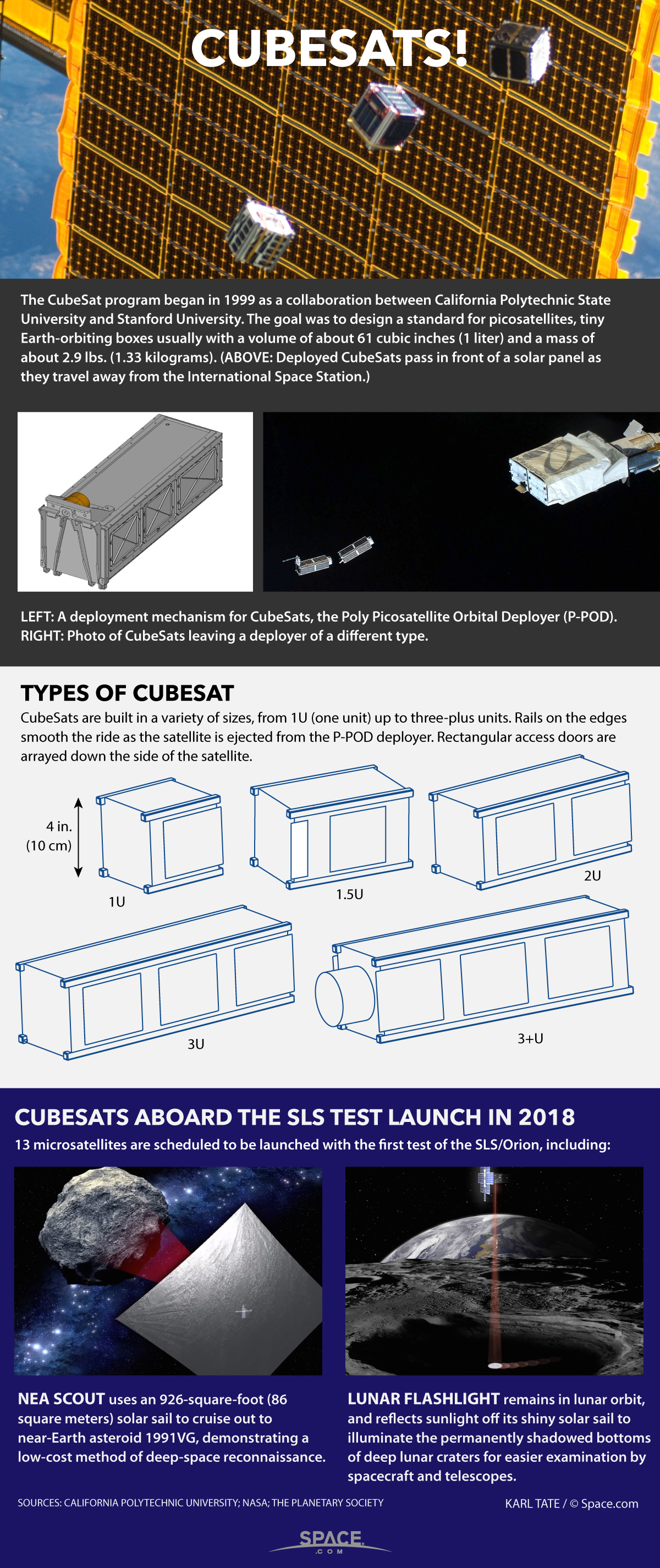General Atomics Ramping Cubesat Production, Muses Railgun Smallsat Launcher

WASHINGTON — General Atomics is better known for building Predator combat drones and mining uranium than building spacecraft, but that could change as the company develops an interest in building defense-focused cubesats.
Also in the realm of possibility: using expertise from building railguns to design a large, electromagnetic cannon as a means to orbit small satellites.
Nick Bucci, vice president of missile defense and space systems for General Atomic's Electromagnetic Systems Group, said the company has built 11 cubesats for the U.S. Army over the past seven years, and is gradually becoming more and more invested in space.

Last February, General Atomics acquired Huntsville, Alabama-based Miltec, gaining a foothold in small satellite production, along with more expertise in hypersonic vehicles. General Atomics has been building 3U cubesats, but with Miltec in hand, wants to build 6U cubesats, and potentially scale up to 500-kilogram small satellites.
"Since we've acquired Miltech we've done a lot of investment in taking the lessons learned from how we build and design those satellites to improve our current generation of satellite design," Bucci told SpaceNews Oct. 11 at the Association of the United States Army conference.
Defense customers are General Atomic's primary focus for satellites. Bucci said General Atomics is less keen to face off against cubesat suppliers selling to commercial operators, instead preferring to carve out a niche building satellites where reliability that they will work as promised is a differentiator.
Government agencies are wrestling with the pros and cons of cubesats — they are substantially lower cost than traditional spacecraft, but sometimes aren't built with enough quality to complete desired missions. NASA, for example, wants to use cubesats for Mars exploration, but doesn't want them to be so cheaply built that they fail before completing their science missions. For apprehensive defense customers, that's where General Atomics sees a market.
Get the Space.com Newsletter
Breaking space news, the latest updates on rocket launches, skywatching events and more!
"One of our strengths is essentially bringing that capability for small satellites to the [Department of Defense], because we have the processes and capabilities for the important mission assurance piece of it," Bucci said. "The Department of Defense wants things to be assured when they launch. They want to know that they are going to work and when they are on orbit, that they are going to work well, and that they were designed to last longer. In the commercial sector there are different standards."
Bucci said the more rigorously built cubesats from General Atomics are typically more expensive and take longer to produce than those designed for commercial customers, but government customers are willing to accept that in return for better quality. Keeping from ruining the benefits of cubesats by over-building them is a challenge, but Bucci said General Atomics is working to strike a balance and sees "a lot of interest across the agencies and the DoD" for small satellites. Bucci said General Atomics is still a newcomer to the satellite industry, building low single-digit numbers per year, but hopes to build more in the future.
"We are evolving with the marketspace as it evolves," he said. "Right now there's not a significant market for building a large number, but we are going to get there because we know the market exists and it's going to develop."
A rail-launcher for small satellites?
General Atomics is developing a variety of railguns for DoD, using electric currents in lieu of chemical propellants to rapidly accelerate projectiles over six times the speed of sound. An idea on the drawing board is making a massive railgun, or rail launch system, that would fire satellites into orbit.
"The pros are it's much cheaper," Bucci said. "I don't need to build a rocket. I don't need to go to a launch facility and go through the expense of building rockets that can launch these payloads. It's a readily available site and all it takes is electricity. It would be probably faster and certainly cheaper if you could do it as compared to having to build a rocket specifically to launch."
Bucci said General Atomics' experience building the electromagnetic aircraft launch system on the USS Gerald Ford aircraft carrier — used to shoot jets off a short runway with enough velocity to gain flight — would also be applicable to a satellite launcher. The cons list for such a launcher is long, however.
"We've had a number of people ask us about it, [but] it's not an easy problem, mainly because to get to launch velocities that you require, you need a very long launcher, and I mean a very long launcher," Buccis said, adding that it would need to be several football fields long. "You would want to build it at a higher altitude if you could, on a mountaintop or on the slope of a mountain essentially."
NASA and the DoD examined similar concepts under its Space Launch Initiative of the late 1990s and early 2000s.
Building a space rail-launch system is little more than an idea at this stage, Bucci said. Given the number of new dedicated smallsat launchers under development, General Atomics is watching the launch market as it evolves while considering any electromagnetic system, he said.
General Atomics' thought process today is that a rail launcher would shoot encapsulated satellites "in something similar to an egg or the nose of a rocket that you see today." Another idea involves a rocket-assisted launch that would use both rail and rocket.
"It becomes a trade space ultimately as to what do you want to achieve," he said.
The U.S. Air Force's Operationally Responsive Space Office attempted a short rail-rocket launch in November 2015, which failed in mid-flight. The Air Force concluded the rocket, called Super Strypi, failed because of the first stage engine.
This story was provided by SpaceNews, dedicated to covering all aspects of the space industry.
Join our Space Forums to keep talking space on the latest missions, night sky and more! And if you have a news tip, correction or comment, let us know at: community@space.com.
Caleb Henry is a senior analyst for Quilty Analytics and a former staff writer for the space industry publication SpaceNews. From 2016 to 2020, Caleb covered the global satellite industry for SpaceNews, chronicling everything from launches, spacecraft manufacturing and ground infrastructure. Caleb's work has also appeared in NewSpace Global and Access Intelligence. He earned a bachelor's degree in political science with a minor in astronomy from Grove City College.










